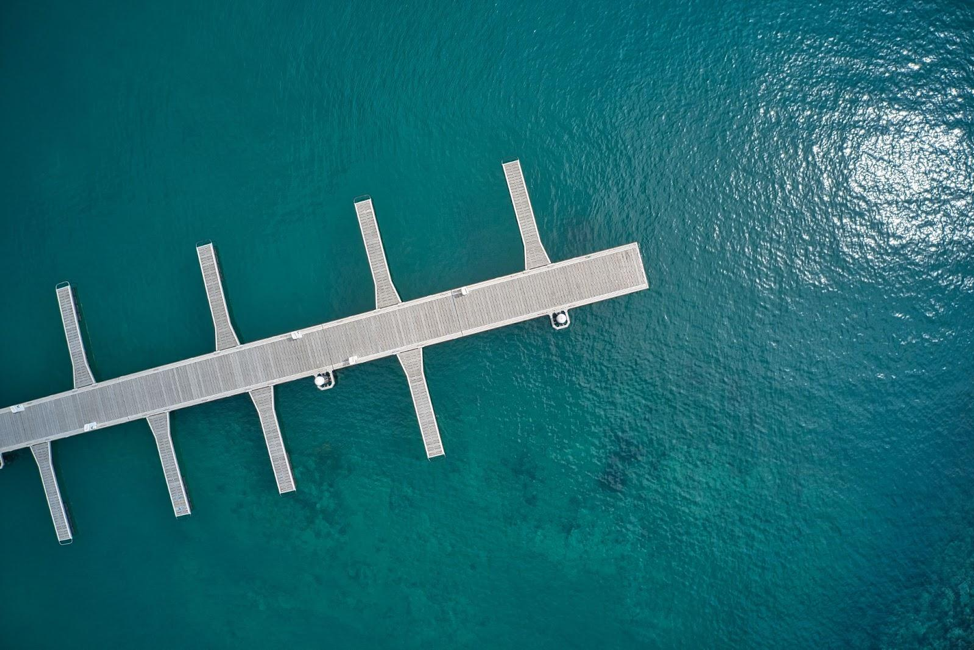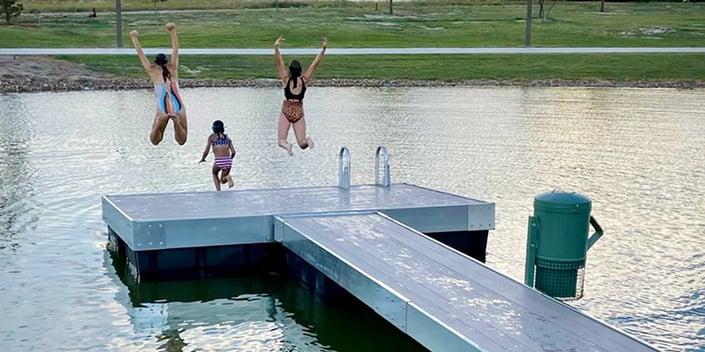Find the Perfect Floating Dock Builder to Bring Your Waterside Vision to Life
Find the Perfect Floating Dock Builder to Bring Your Waterside Vision to Life
Blog Article
Upgrade Your Waterside With Sturdy Floating Docks
Updating your beachfront with resilient floating docks can substantially enhance both functionality and aesthetics, giving a flexible solution for various water tasks. With a variety of materials offered, consisting of low-maintenance choices and traditional timber, selecting the best dock can enhance your personal design and satisfy sensible requirements.
Benefits of Floating Docks
Floating docks deal a plethora of benefits that boost their allure for different maritime applications. One of the key advantages is their adaptability to changing water levels - dock company. Unlike conventional fixed docks, floating docks fluctuate with the tide, making sure consistent accessibility for watercrafts and boat despite environmental conditions. This function substantially decreases the threat of damage to vessels, as they remain safely tied also during fluctuations in water deepness.
Additionally, floating docks are much easier to mount and move, giving versatility for temporary or seasonal use. Their modular layout permits modification to fit details demands, whether for personal marinas, household beachfronts, or industrial applications.
Moreover, floating docks produce marginal disruption to the marine atmosphere, maintaining regional ecological communities and decreasing the likelihood of erosion. They additionally provide boosted safety and security and security for customers, as their resilient nature provides a more flexible surface area than rigid frameworks.
Additionally, floating docks can promote a varied range of tasks, such as fishing, swimming, and leisure boating, making them a beneficial asset for beachfront development. Their convenience and usefulness make floating docks a recommended option for a range of marine jobs.
Selecting the Right Materials
Picking appropriate materials for floating docks is important to their longevity, efficiency, and total performance. When selecting materials, consider aspects such as environmental exposure, maintenance demands, and architectural integrity. Common materials include wood, plastic, aluminum, and composite options, each offering unique advantages and downsides.
Wood, while visually pleasing, calls for normal upkeep to protect against rot and decay. Pressure-treated timber can enhance sturdiness, but it might still give in to water damages with time. Plastic floats, commonly made from high-density polyethylene, are immune to corrosion and need very little upkeep, making them an eye-catching choice for low-maintenance applications.
Light weight aluminum is another viable alternative, known for its stamina and lightweight residential properties. It is immune to rust and can endure harsh climate conditions, although it might be a lot more pricey than other materials. Composite products combine the ideal attributes of timber and plastic, providing a resilient and low-maintenance option that simulates the look of wood without the associated drawbacks.
Ultimately, the selection of material should straighten with the meant usage, environmental considerations, and budget plan constraints, guaranteeing a functional and durable floating dock that meets your specific demands.
Installment Process Overview
The effective installment of a drifting dock depends on mindful planning and execution, making certain that it runs efficiently in its designated setting. The very first step includes evaluating website conditions, including water deepness, shoreline features, and dominating weather patterns, which will inform the dock style and anchoring system.
Adhering to the site assessment, the following phase is to prepare the floating dock components. This includes constructing the frame, protecting drifts, and affixing any kind of essential hardware. It is essential to make certain that all connections are water-resistant and robust to stand up to marine conditions.
Once the dock is put together, the setup procedure begins with positioning the dock in the water. This can entail a crane or other lifting equipment, particularly for bigger structures. Appropriate placement is important for performance and safety.

Upkeep Tips for Long Life
Regular upkeep is crucial for making certain the long life and optimum performance of a floating dock. To accomplish this, begin with regular evaluations at the very least twice a year, focusing on the honesty of the dock's framework, consisting of the flotation devices and attaching hardware. Look for indications of wear, damage, or corrosion, and attend to any concerns quickly to stop further deterioration.
Cleansing is another vital facet of maintenance. Eliminate debris, algae, and barnacles from the dock's surface area to prevent slippery problems and keep aesthetic appeal. Use a soft brush and a mild cleaning agent to prevent damaging the dock's materials.
Furthermore, guarantee that the dock is effectively secured and secured to hold up against Visit Website seasonal modifications in water levels and weather. Examine the anchoring system for stability and make adjustments as necessary.
Enhancing Your Outside Aesthetic
To produce an aesthetically enticing outside room, integrating a floating dock can significantly boost the general aesthetic of your waterside home. Floating docks are not only practical however can also function as a striking focal point that matches the natural surroundings - floating dock builder. Offered in various products and designs, these docks can be personalized to match your residential property's architectural design and landscape
The addition of decorative components, such as incorporated lighting or fashionable railings, even more boosts the dock's visual appeal. Consider making use of natural timber finishes, which blend perfectly with the atmosphere, or choosing modern-day products like light weight aluminum or composite outdoor decking that provide a streamlined, modern look.
Tactically putting planters or seating locations on or around the dock can develop welcoming spaces that urge leisure and pleasure click to find out more of waterfront sights. In addition, integrating shades and appearances that balance with your landscape will certainly develop a cohesive aesthetic throughout your outside area.

Verdict

Upgrading your waterside with long lasting floating docks can substantially boost both capability and appearances, supplying a functional service for numerous water activities. Unlike standard fixed docks, floating docks surge and autumn with the tide, ensuring constant availability for boats and watercraft regardless of ecological problems.Selecting proper materials for floating docks company website is essential to their longevity, efficiency, and overall effectiveness.Once the dock is assembled, the installment procedure begins with positioning the dock in the water.In recap, floating docks deal many benefits, consisting of adaptability to water degree adjustments and a variety of product choices.
Report this page